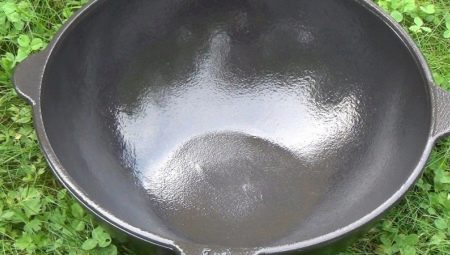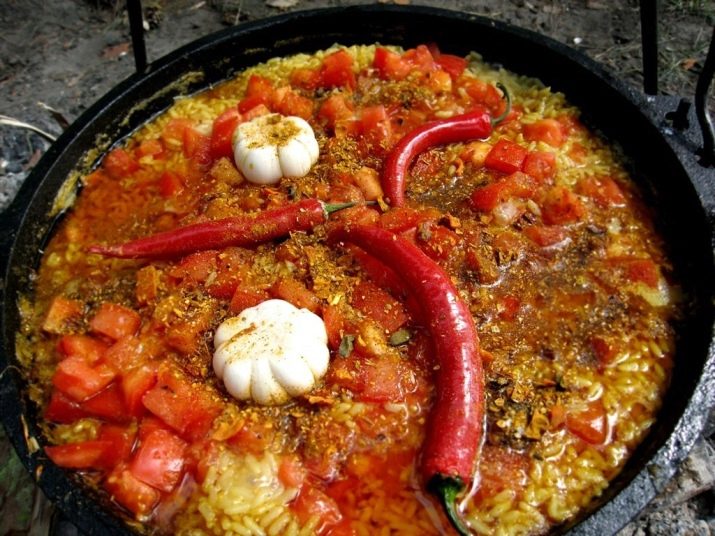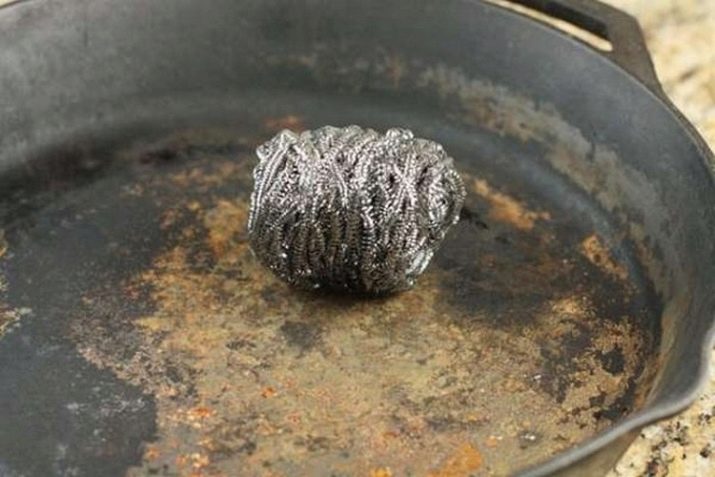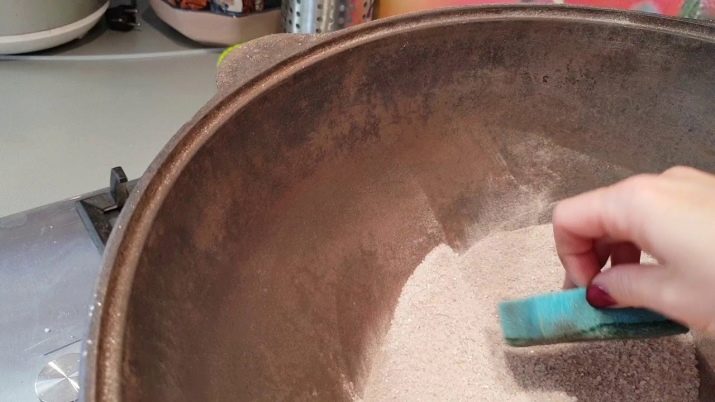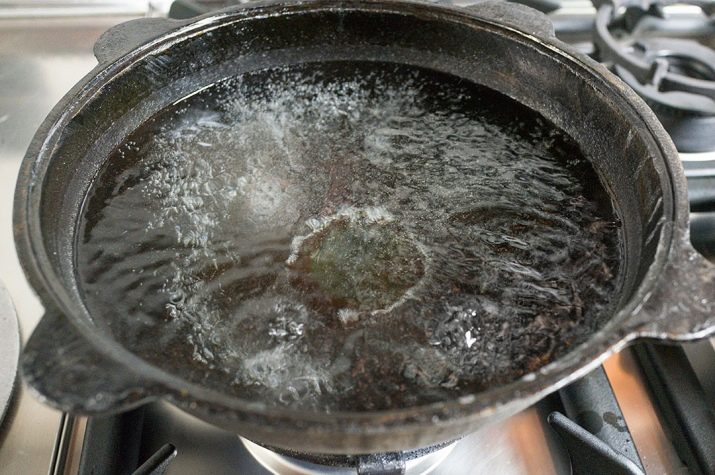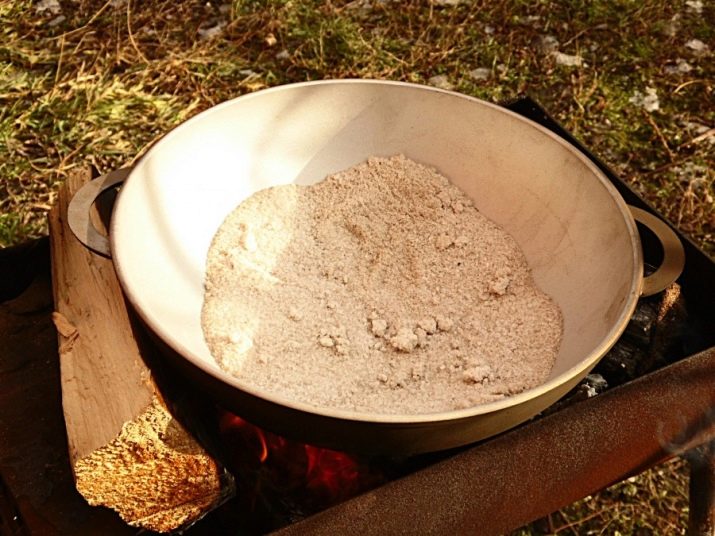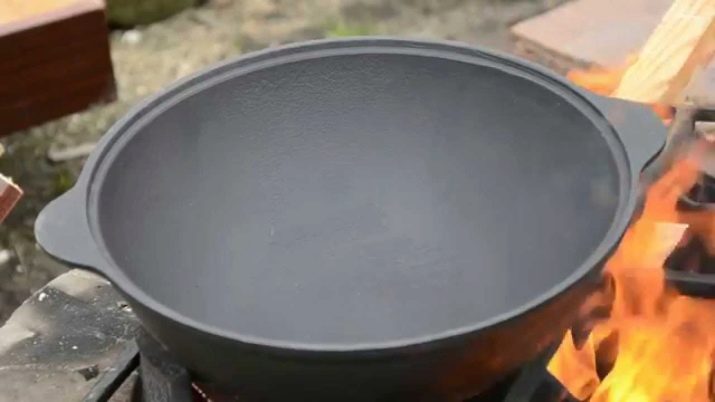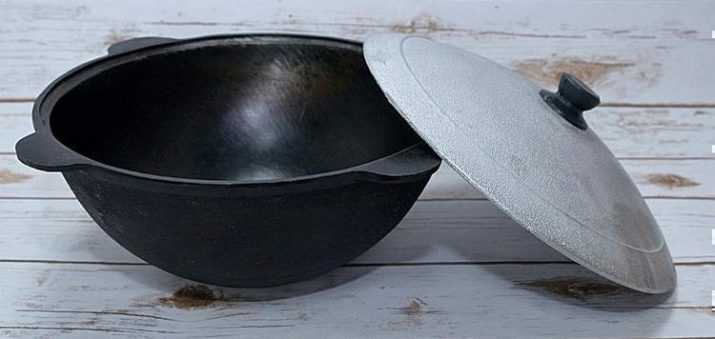The cauldron is a universal type of kitchen utensils and allows you to engage in cooking both on the stove and on an open fire. However, the latter method of operation leads to the formation of soot and greasy deposits on the outer walls of dishes, which is why the cauldron needs more thorough and painstaking care than ordinary kitchen pots and braziers.
What is kazan?
The story of the appearance of the cauldron goes back into the distant past. The first vessels appeared in the countries of the East and were made of the most affordable material in terms of processing - copper. However, over time and with progress in the processing of more solid and durable metals for the manufacture of cauldrons began to use duralumin alloy and cast iron. These metals are significantly different physical properties, but both have a high heat capacity. This property, combined with the rather impressive thickness of the walls of the pot, makes it possible to deal not only with cooking and stewing, but also with stewing and roasting various dishes. Thick walls for a very long time give off heat to the products inside, which is why the dish is prepared more evenly and manages to be fed with the aroma of seasonings.
As for the shape of the product, it can be round or elongated and have both a flat and rounded bottom. Flat-bottomed models are suitable for use on gas and electric stoves, while products with a round bottom are designed exclusively for open fire. Street cauldrons are installed on portable tandoors, placed on tripods or barbecues, and sometimes even put on hot coals. In terms of convenience of cooking, round dishes compare favorably with traditional models with a flat bottom. This is due to the fact that in round cauldrons it is much more convenient to mix food, moreover, the oil flows evenly along the sloping walls and is less absorbed into the dish. The versatility of the cauldron allows you to cook various sauces in it, stew fish and meat, cook rich soups and cook pilaf.
Cleaning methods
The choice of the most effective method of cleaning a cauldron completely depends on the material from which it is made.
Aluminum models
Cauldrons made of aluminum are much easier to clean cast iron, which is explained by the less porous structure of the metal. However, aluminum-based duralumin alloy is subject to the formation of oxide plaquethat appears when metal is in contact with oxygen, which is part of the air. To deal with the touch is easy. To do this, you must regularly clean the pot with a soft metal sponge and abrasive detergent.
The use of rigid sponges is unacceptable, as they leave deep scratches on the soft metal, in which food particles accumulate on the inside, and drops of grease and soot from the outside.
In order to clean the aluminum cauldron from soot and soot, use a large basin in which water is poured and add 500 grams of soda ash, a piece of rubbed soap and a couple of bottles of silicate glue. Then put the container on the fire, the components are well mixed. After they are completely dissolved, they put a dirty cauldron there. Boil the pot should be at least 25 minutes, before opening the window or turn on the hood. Such a measure is necessary to eliminate the unpleasant odor that will emanate from dissolving old fat.Then the cauldron is removed, rubbing the fat with a washcloth of medium hardness using a dishwashing gel and rinsed.
However, if a large basin, where the cauldron could fit, was not available, you can use the bath. To do this, pick up hot water in it, pour whitening powder and pour dishwashing liquid. The cauldron is placed in water in such a way that all polluted places are hidden under water, and then left overnight. In the morning, the product is washed with a metal sponge using a liquid and rinsed well.
The following method will help remove dirt from the inside walls of the cauldron. To do this, it is enough just to pour a soap and soda solution into a pot and boil it for 15–20 minutes. The composition is prepared in the following proportions: 5 liters of water, 5 grams of soap and 2 tbsp. l food or soda ash. In field conditions, clearing the cauldron can be even easier. Pour some water into it, bring it to a boil, moisten the dirt present on the walls and sprinkle it with salt. After the water in the cauldron cools down a little and becomes tolerable for the hands, the cauldron is tilted and the dirt from the walls is washed off with a metal sponge.
When cleaning an aluminum cauldron, it is important to remember that it is strictly forbidden to ignite it, since aluminum does not tolerate strong heating and may be deformed. If dark spots appear on an aluminum cauldron with time, then 6% vinegar will help to cope with them, in which they moisten a napkin and wipe the darkened areas. In the case of burning of food, salt, soda and citric acid in a ratio of 1: 1: 1 are poured into a pot, poured a little water and boiled for 20 minutes. A similar effect has a mixture of 1/3 of a piece of soap, a spoon of ammonia and a couple liters of water. The resulting solution is also poured into the cauldron and boiled for 20 minutes.
Slightly more difficult to cope with rust, damaging the metal with improper storage cauldron. To do this, the vessel is soaked in a solution of water and vinegar, taken in equal parts, and then with a metal sponge scraped off a rusty plaque. If the corrosion process managed to catch at the very beginning, then you can do without boiling. To do this, take a sandpaper of large grain and clean off the rust. Then, the cleaned areas are passed through fine-grained sandpaper, after which they wash the vessel with the help of a liquid and rinse.
Cast Iron Cauldron
Products made from cast iron should be handled with particular care. Despite its apparent strength and thickness, cast iron is a rather brittle metal and can break if dropped. At the production stage, cast iron models undergo a burnishing or oil firing, which leads to the creation of non-stick and anti-corrosion layer. Therefore, it is desirable that the cast iron products are not scratched, as a result of which the protective layer is broken and the product begins to rust. Both internal and external contamination from cast iron models are eliminated by the same methods as with aluminum, and imply the use of already known components: salt, soda, silicate glue and laundry soap.
However, unlike aluminum models, cast iron products can be ignited. For this, the cauldron is placed in the oven and heated to 300 degrees. After 10 minutes, the vessel is removed, greased on all sides with oil and sent to the oven for half an hour. This procedure will help to restore the lost properties of the protective layer and prevent the occurrence of corrosion.
For cleaning cast iron cauldrons, as well as for aluminum, you can use household chemicals. Good results in removing burned food are given by the treatment with compositions for ovens and kitchen extracts, which very effectively cope with long-standing grease and soot.
In field conditions, the cast iron model can be cleaned as follows: cauldron to the top filled with river sand and hung over the fire.After several hours, the vessel is released and rinsed. Instead of sand, you can use table salt, 2 kg of which is poured into the cauldron and for 2 hours (stirring), thoroughly calcined on the stove. At the end of the procedure, the salt will darken and the cauldron will clear.
The following method of cleaning cast iron is also effective; however, after its application, the cauldron needs an obligatory roasting time of 3-5 times using vegetable oil. So, in a cauldron pour 1/2 cup of dry mustard powder and citric acid in the amount of 40 grams, pour 1 l of water and boil for 20 minutes. Then they wait for the solution to cool slightly and use the soft metal sponge to clean the inside walls of the cauldron. Then the product is rinsed, wiped dry and calcined.
Storage rules
After each use, aluminum models should be thoroughly cleaned with a degreasing agent, rinsed well, and wiped dry. Such products should be stored in a dry and well-ventilated area, since the aluminum surface can become a breeding ground for the fungus.
Cast iron models should also be thoroughly washed after each use, wipe well and protect from excessive moisture.
During long-term storage, a cast-iron cauldron is recommended to be wrapped in oiled cotton or linen fabric and cleaned in a dry place.
Oiled paper can be used instead of cloth - it will also protect the product from moisture and prevent rust.
As you can see, it is not difficult to care for a cauldron at home. The main thing is to clean it in time and not to allow old contamination. And then, sparkling and clean, it will serve its owners for a long time.
How and how to wash a cast iron cauldron, see the following video.
